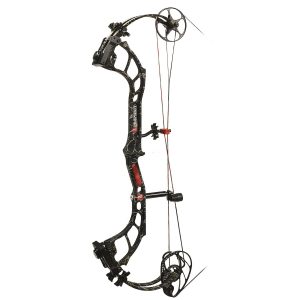Every sport conveys some risk. Sports, for example, football, lacrosse, hockey and so on, have a greater risk level. Any individual who can partake in these exercises for long period without getting some kind of injury is really fortunate. They are simply difficult on the body and comes with a noticeable toll in a brief timeframe.
Other sports like archery, have a lesser risk factor. Without a doubt, archery mishaps do occur, yet they can generally be prevented by following a couple of simple prevention measures when shooting a target or out in the archery field. However secure, archery still needs to be enlightened about some possible injuries that they may come across.
Some Major Archery injuries
Although archery is well-known to have a low incidence of injury, however, there is still some risk associated with it. The Bowman may be a victim of rotator cuff injuries, muscle strains, contusions and tendinitis in the wrist, elbow or shoulder. We are going to discuss these injuries one after the other so read on!
Rotator Cuff Injuries
As a result of the consistent pull of the bow string, particularly at high pull weights, the muscles at the rotator cuff are under steady strain. The action of drawing back the string as the arrow is positioned puts extra weight on these muscles. The rotator cuff muscles may turn out to be plainly exhausted, thus resulting in strains.
Much pains in the shoulder, particularly during the pulling action might be apparent. Shortcoming and inability to raise and turn the arm may likewise happen. This might be cured with rest, ice and the utilization of non-steroidal calming medication. In extreme cases, or resistant to treatment or complete tears, surgical remediation might be required.

Most people recoup from rotator cuff injuries with physical therapy practices that enhance strength and flexibility of the muscles encompassing the shoulder joint. Rotator cuff tears may likewise happen because of a single muscle damage. In those conditions, medical care needs to be given as early as possible. Broad rotator cuff injuries may require surgical repair, joint replacement or transfer of alternative tendons.
Tendinitis
This injury is caused by repetitive or unusual strain on the ligament. The steady strain placed on the ligaments amid archery can result into tendinitis, usually in the joints of the furthest points, particularly the wrist, shoulder, and elbow. Pain in the connection of the muscle, particularly when the muscle flexes prior to warming up, may show tendinitis. The joint might be sore and stiff and the muscles might be weaker than normal.
Anybody can get tendinitis, however, it is more common in grown-ups (especially those more than 40 years old). As ligaments age, they endure less stress, are less flexible, and are much easier to tear. Some can happen all of a sudden, keep going for a considerable length of time or more and usually treated with medication or rest. They can likewise happen again in a similar body area.
NSAIDs and rest might be all that is needed to cure tendinitis. Recuperation time will differ contingent upon the seriousness of the injury, with an average 3-6weeks. Tendinitis may leave after some time. If not, the specialist will prescribe medicines to reduce inflammation and pain and also secure mobility to avert disability and recurrence of the injury.
Muscle Strains
The muscles of the neck, shoulder, and back are subjected to steady tension during archery activity and overtime, or when utilizing another bow, could be liable to a strain. The muscle strands tear slightly amid normal use. However, when subjected to a burden that is much higher than their ability, more strands may tear, thus causing inflammation and pain. The muscle will likewise be incapacitated to handle large burdens until the point when it repairs.
Much pain within the muscle, stiffness, and inflammation might be evident with muscle strain. Ice (for the initial 72 hours), rest and the anti-inflammatory solution will help deal with the strain. Restricted action can endeavor as it is endured. The amount of enlargement or local bleeding of blood into the muscle from torn veins can ideally be dealt with early by putting ice packs and keeping up the stressed muscle in an extended position.
Heat can likewise be applied to the injured region when the swelling has reduced. However, early use of heat can increase pain and swelling. Note: heat and ice mustn’t be used on bare skin. Always utilize a defensive covering, for example, a towel in the middle of the heat or ice and the skin.

Contusion
When there is a release of the bow string, it might slap along the lower arm in transit back, this is known as String Slap. This can bring about contusion (also known as bruising) where the string hits. The veins beneath the string are broken because of the force of the bow string hitting the region and this resulting into bleeding underneath the skin. Discoloration and slight swelling will be present. Keen pain will be felt quickly, at that point the pain becomes plainly dull and normally only happens with weight on the area.
Bruises usually incite pain, but little bruises aren’t normally hazardous alone. Sometimes they can be severe, prompting other more life-debilitating types of hematoma, for example, when related with severe wounds, including bone fractures and more serious internal bleeding.
The probability and seriousness of contusion rely upon many variables, including sort and wellbeing of influenced tissues. Minor bruises might be effectively recognized in individuals with light skin hue by characteristic purple or blue appearance in two or three days after the injury. Ice and security will speed the recuperation of the contusion.
Conclusion
The easiest way to keep these major archery injuries is by avoiding them over time. All these injuries can be somewhat avoided by keeping up a decent level of physical shape. You don’t need to be running marathons, yet light physical action and a couple of archery activities can most likely keep you shooting great into your brilliant years. Likewise, it is vital to know that inordinate shooting will pretty much increase your tendency of developing these conditions later in your lifetime.
There are a lot of experienced shooters who have surrendered because of archery injuries. Sometimes this could be outside our ability to control, but in some cases, we can find a way to avoid these major archery injuries.


